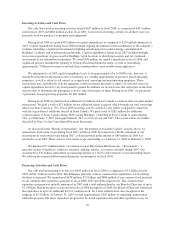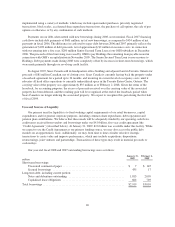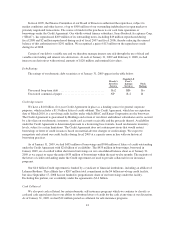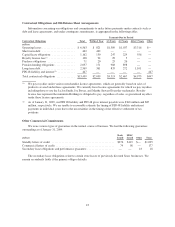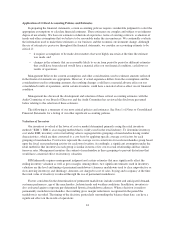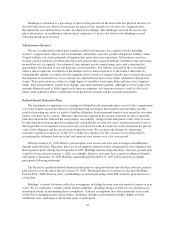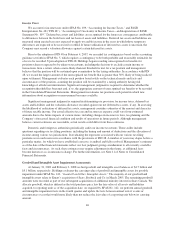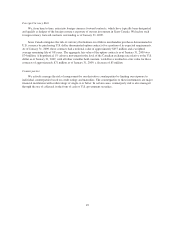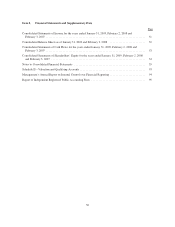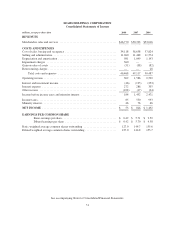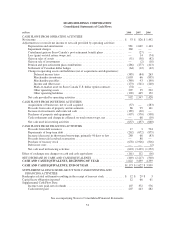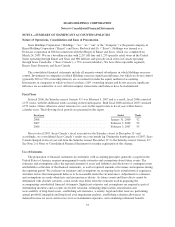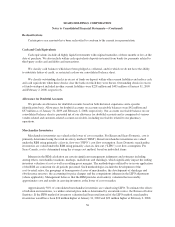Sears 2008 Annual Report Download - page 47
Download and view the complete annual report
Please find page 47 of the 2008 Sears annual report below. You can navigate through the pages in the report by either clicking on the pages listed below, or by using the keyword search tool below to find specific information within the annual report.A significant amount of judgment is involved in determining if an indicator of impairment has occurred.
Such indicators may include, among others: a significant decline in our expected future cash flows; a sustained,
significant decline in our stock price and market capitalization; a significant adverse change in legal factors or in
the business climate; unanticipated competition; and the testing for recoverability of a significant asset group
within a reporting unit. Any adverse change in these factors could have a significant impact on the recoverability
of these assets and could have a material impact on our consolidated financial statements.
Our goodwill resides in multiple reporting units. The goodwill impairment test involves a two-step process.
The first step is a comparison of each reporting unit’s fair value to its carrying value. We estimate fair value
using the best information available, including market information and discounted cash flow projections also
referred to as the income approach. The income approach uses a reporting unit’s projection of estimated
operating results and cash flows that is discounted using a weighted-average cost of capital that reflects current
market conditions. The projection uses management’s best estimates of economic and market conditions over the
projected period including growth rates in sales, costs, estimates of future expected changes in operating margins
and cash expenditures. Other significant estimates and assumptions include terminal value growth rates, future
estimates of capital expenditures and changes in future working capital requirements.
If the carrying value of the reporting unit is higher than its fair value, there is an indication that impairment
may exist and the second step must be performed to measure the amount of impairment loss. The amount of
impairment is determined by comparing the implied fair value of reporting unit goodwill to the carrying value of
the goodwill in the same manner as if the reporting unit was being acquired in a business combination.
Specifically, we would allocate the fair value to all of the assets and liabilities of the reporting unit, including any
unrecognized intangible assets, in a hypothetical analysis that would calculate the implied fair value of goodwill.
If the implied fair value of goodwill is less than the recorded goodwill, we would record an impairment charge
for the difference. See Notes 13 and 14 to the Consolidated Financial Statements for further information
regarding goodwill and related impairment charges recorded during fiscal 2008.
A key assumption in our fair value estimate is the weighted average cost of capital utilized for discounting
our cash flow projections in our income approach. We believe the rate we used is consistent with the risks
inherent in our business and with industry discount rates. We performed sensitivity analyses on our estimated fair
value using the income approach. Holding all other assumptions constant as of the measurement date, we noted
that an increase in the weighted average cost of capital of 100 basis points would result in our moving to the
second step of the impairment test for an additional reporting unit that has approximately $500 million of our
goodwill.
We validate our estimates of fair value under the income approach by comparing the values to fair value
estimates using a market approach. A market approach estimates fair value by applying cash flow multiples to
the reporting unit’s operating performance. The multiples are derived from comparable publicly traded
companies with similar operating and investment characteristics of the reporting units.
New Accounting Pronouncements
See Note 1 of Notes to Consolidated Financial Statements for information regarding new accounting
pronouncements.
47




